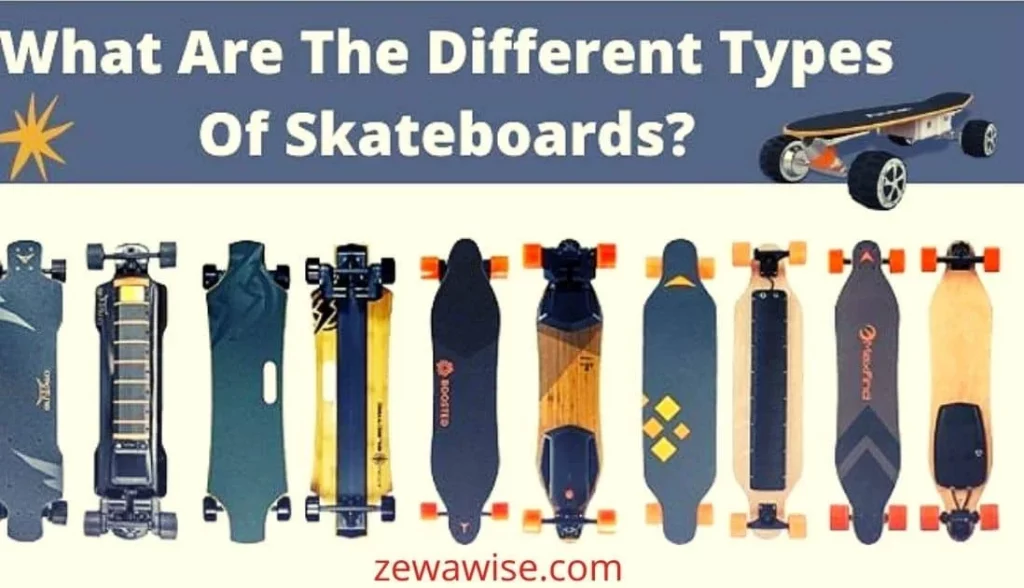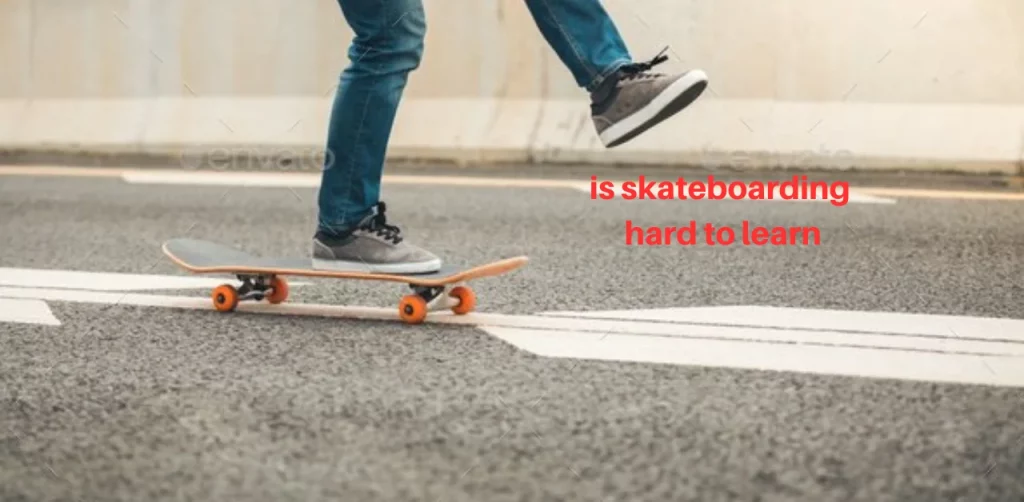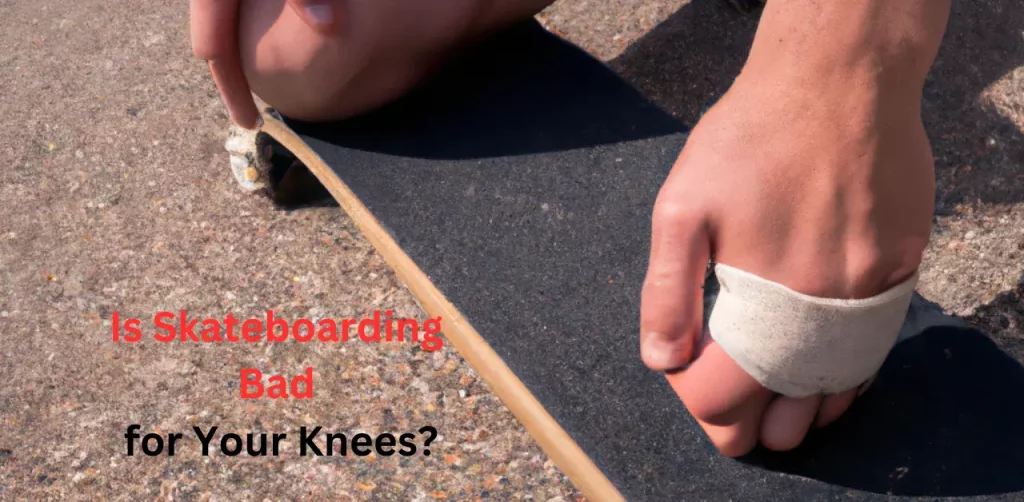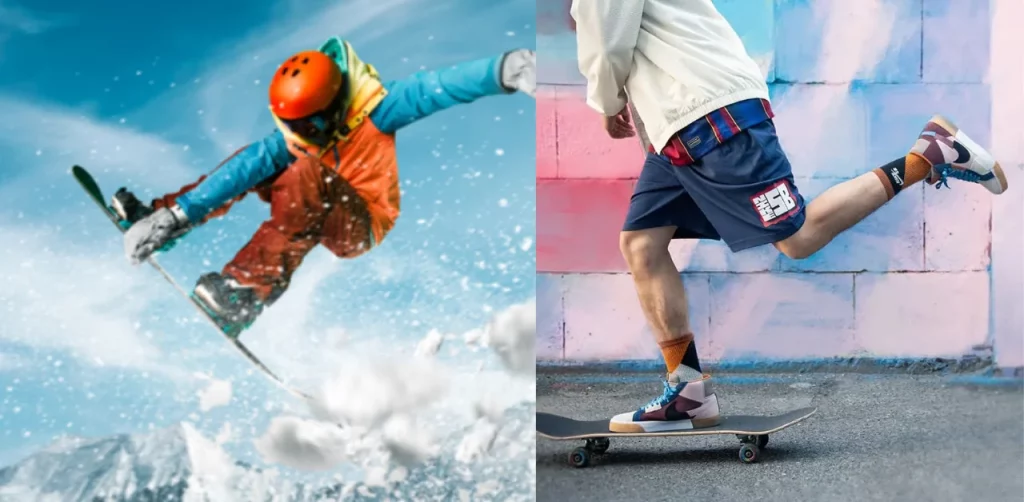Skating is a popular hobby and fun activity and is becoming more trendy with time. Since 1959, people have been skating using a gadget pointed out as a skateboard. Once played in the USA only now it is a popular sport throughout the world. In addition, a lot of skating tournaments are organized in various countries. you’ll have all the information you need to make an informed decision on what types of skateboards are best for your skating style.
Different types of skateboards have evolved over the period, which is the fundamental reason behind their massive increase in popularity. What type of skateboard is best for beginners? I want to say that all skateboards are different from one another, so you should try all of them because they come up with more extents to skating.
Skateboard: An overview
Simply put, a skateboard is a board or deck on which skating is possible. The meaning of “skating” from Oxford Dictionaries is moving or doing a distinct action on the surface. Notably, the board or deck can be of varying shapes or lengths. We can categorize different kinds of skateboards due to their varying sizes, shapes, features, and technological add-ons.
Apart from recreational exercises, the utilization of skateboards in public transportation is crucial. You have likely seen people using skateboards to roam hither and thither inside city premises. Nowadays, it is pretty common for students to go to school on their skateboards. Its health benefits are also unbelievable.
Some use skateboards for fun and transportation, whereas some perform fascinating stunts—your aim to manipulate the skateboard matters a lot when buying a cool skateboard. Besides that, this is best to answer all your queries related to the types of skateboards.
Different Types of Skateboards
Skateboards look similar but might be quite different when it comes to using them. Other than that, skateboards are classified into the following categories based on their operating techniques, sizes, skateboard shapes, and features. Let’s have a look.
On the footing of operating technologies, we can classify skateboards into two types: non-electrical and electrical. If you know the history of skateboards, you know that non-electrical boards are the first ones whereas the electrical ones are the newest in the market.
Non-Electrical Skateboard
The conventional version of the skateboard is none other than a non-electrical skateboard because they do not have any engine or motor. Mainly, you have to move the deck with the push yourself. Amazingly, the wheels of these boards are ultra-smooth, allowing the user to roll them on all terrain. We can further categorize them by their size and shape.
Pros:
- Conventional
- Meant of all genders and ages
- Simple and intuitive controls
- Very affordable
- Low maintenance
- Varieties are available
Cons:
- It demands a lot of muscle power in unbalanced streets
- Tiring to use
Electrical Skateboard
The name itself signifies that its operation relies on electrical energy generated by an engine or motor. Some say that it is the future of the skateboard due to uncompromising speed, ultimate balance, and the ability to withstand harsh circumstances. Apart from that, there is another intuition in the market called self-balancing scooters, very similar to electric skateboards.
Pros:
- Effortless controls
- Innovative features
- Ideal for physically special people
- Adequate for riding in all street types
- Matchless speed
Cons:
- High maintenance cost
- Not ideal of newbies
- Costlier
Sizes
We can easily differentiate skateboards as scoreboards and longboards.
Longboards
Longboards, as from the name, state that they are bigger in size than the rest. In addition, longboards can be further classified into skateboard shapes. The subcategories of these skateboards are the following:
Twintip longboards
If we look deeply, then we will find out that both Twintip and Downhill longboards are similar to a great extent. You are thinking about the difference between them, right? Notably, the Twintip skateboard has identical sides, which is not the case with the Downhill skateboard.
Pintail longboards
There is no apparent difference between classical and pintail longboards except for their oval shape. Moreover, the oval shape results in the wheels looking like they are outside the deck. Those who want to ride at a significantly faster rate should go for pintail longboards.
Downhill longboards
The length and width of a downhill longboard are principally the same as a classical longboard, whereas its deck’s height is lower. Interestingly, these longboards are engineered to accommodate large wheels to attain maximum speed when riding over it down the hill. Forty-five miles per hour speed is achievable via these boards.
Classical Longboards
The look of the classical longboard is perfect, with a size of more than 33 inches along with a wider board. For simple tasks like riding and turns, it is promising. Besides that, if you want to perform tricks, then a simple longboard is not a wise solution.
Shortboards
The name indicates that the shortboards are short-length skateboards. Other than that, there are ample varieties in storyboards than longboards, making it easy for the user to pick the adequate one. Its subcategories are as follows:
Cruiser shortboards
Those who want to employ skateboards for transportation will be better off with cruiser skateboards. Additionally, they are identical to street shortboards but have thicker boards and large wheels, perfect for off-the-road use. The best part is Ollies and Flipkicks are possible with this skateboard.
Double kick skateboards
The design of double kick skateboards is a minor modification of a street skateboard with a nose and tail slightly tilted upwards. You can effortlessly perform any tricks and stunts due to its supportive configuration. Moreover, it can also withstand hard impacts on the all-terrain thanks to its thicker deck.
Mini skateboards
Mini shortboards are the smallest size skateboards available in the market. They are intended for use by newbies or young kids. It does not mean older and experienced skateboarders style can not utilize it. Its portability and light body make it a favorite of many.
Street skateboards
Known as the most versatile form of skateboard, you can utilize these cool skateboards in transportation, performing tricks, and recreational activities. Impressively, they have the same nose and tail making it look like a fishtail skateboard.
Penny or nickel skateboards
These shortboards are compact, light, and easy to carry because their deck is made of plastic. In addition, they tend to look shorter than their conventional counterparts. Besides that, they come in a vert skateboard, park skateboards, cruising skateboards, and street skateboard appearance.
How to choose a skateboard?
Choosing a skateboard is a complex endeavor because of its dozens of variations and brands. Here are some aspects you need to follow for buying a suitable board for you.
Budget
No matter what you buy, budget plays a significant role in determining which type or quality of the product you will get. With a decent budget, you will be in the position to purchase the right skateboard.
Shoe size
Always buy the cute skateboard by making sure that your shoe size is compatible with the deck of the skateboard or not. For example, a board with an 8 to 8.5-inch deck size is ideal for a person with a 9 to 9.5-inch shoe size.
Height
You need to check your height and then buy a skateboard because shortboards are not ideal for prominent height persons and vice versa. The reason is that making a perfect balance on a large or small skateboard is troublesome.
Riding style
The aim of the person to use the skateboard determines a lot about their preferences and insight. Specifically, you can not use a standard skateboard for downhill riding and performing catchy eye stunts.
Final Words
The huge variety of skateboards creates a lot of confusion among buyers because they find all of them suitable for some reason. You have first to understand your requirements and preference, then check out which types of skateboards is fulfilling those conditions and get it. I hope that this guide has helped you learn about different categories of skateboard and you are now clear about your needs and realize which one is suitable for you.

“Welcome to our website, Here You’ll find a wealth of information on finding the right skating gear that will last for years to come, as well as tips and tricks to help you improve your skills. Whether you’re a beginner or an experienced skater, you’ll find something of value here.”



